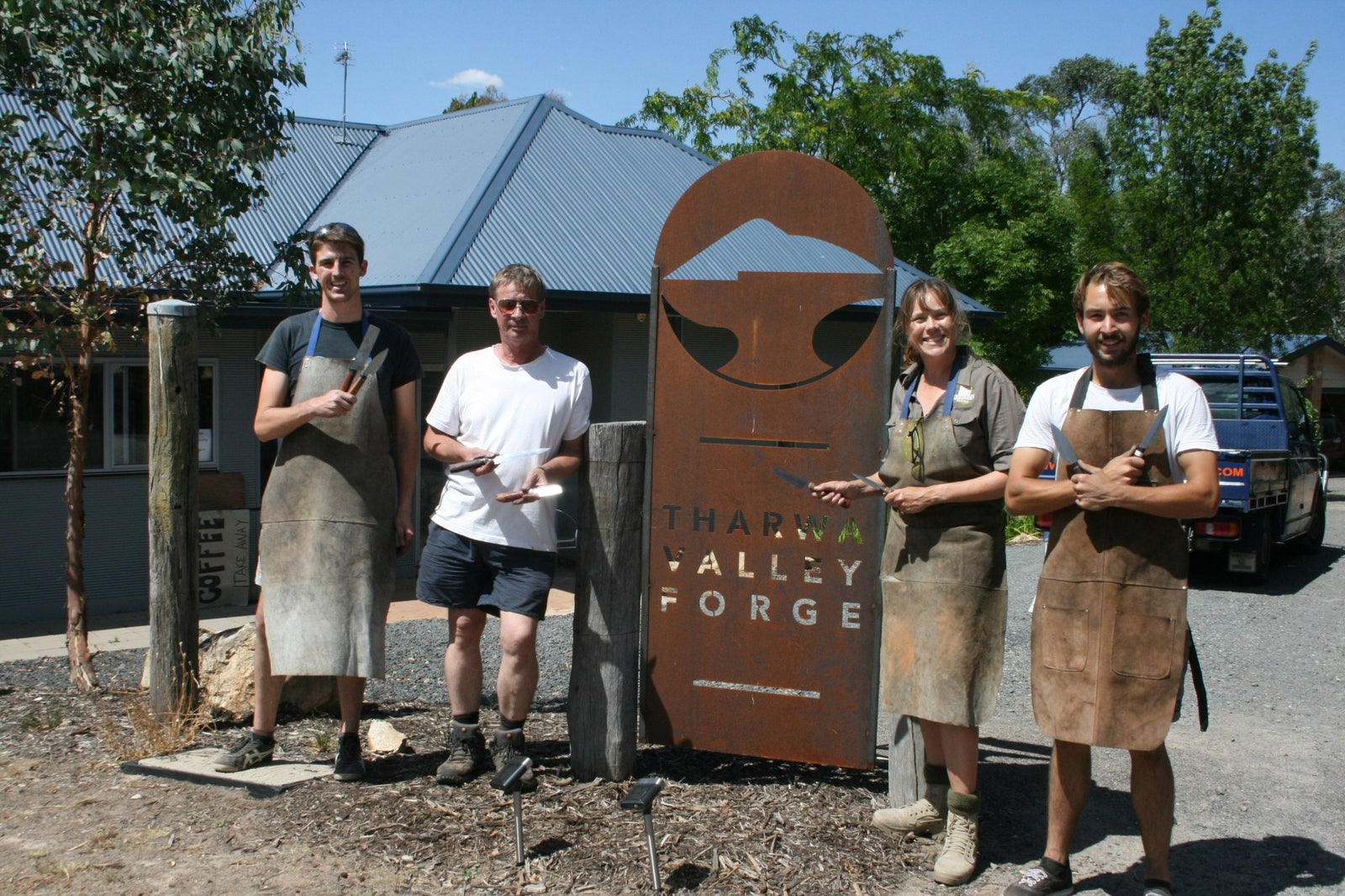The art of knife-sharpening

As we travel around this great country, we often come upon travellers turning their hand to different jobs to earn enough money to keep them on the road for a little bit longer.
When we think of backpackers, for example, we might visualise buskers, fruit pickers and casual bar staff or baristas. And it’s not unusual to find avid caravanners who advertise their services as temporary caravan park managers to give the owners a break. We’ve even seen Tupperware parties held in camp kitchens!
So it’s no surprise that there are blogs to tell you about any number of ways to earn money when you’re on the road.
Many people who take up these opportunities have full time jobs when they’re not travelling, but for others the flexibility that comes from a vagabond existence becomes a way of life and their primary source of income.
Many of these people are within our touring community and their small businesses can be focussed around unique areas of craftsmanship that may have been lost to the mainstream years ago.
One of these skills is knife-making and — associated with this — knife-sharpening. Think about it: When was the last time you used a knife? How often do you use one every day? And how many of your newly-bought knives are disappointing in their tendency to squish and hack the foods that you’re attempting to cut, rather than achieving a clean slice?
We bet that many caravanners and travellers would give their last T-bone for a sharp blade. So, perhaps a nice way to earn some spare cash around the camp kitchen would be to become the only person within a 100km radius to be able to sharpen a blade properly. At five bucks a knife, it doesn’t take much imagination to think what you could do with the extra pocket-money. And the great thing about sharpening knives is, it doesn’t require back-breaking work under a grapevine or the capacity to withstand the auditory barrage of a night-club.
So we thought we’d have a closer look at what it takes to put a decent edge on a blade.
GETTING BACK TO BASICS
When you think about sharpening a knife, you probably think of one of those commercial options that some infomercial told you would keep a decent edge on your blade for the next three weeks. More likely, that device has instead scraped away your blade’s edge into metal filings which means a dulled cut is all that’s in your future.
A better alternative is to ditch the gadgets and find yourself a good piece of sharpening steel, sharpening stone or even the unglazed rim from the bottom of a ceramic tea cup!
Paper-sharpening wheels are also common among professionals. These comprise compressed paper wheels that fit on bench grinders or buffers and are coated with a silicon substance infused with fine grit or conditioning wax to achieve a sharp edge with minimal damage to the blade’s steel. One of the best examples we’ve seen is the Razor Sharp Edgemaking Paper Sharpening Wheel System.
Regardless of the method you choose, ultimately it’s all about the ‘angle of the dangle’. What we usually do wrong when we try to sharpen blades is we get the angle too shallow thinking that we’re aiming to achieve a razor-edge — just like a Japanese tuna knife. We’re wrong.
It turns out that most western knives actually need a blade that is sharpened at the following angles:
30 degrees for a general chopping edge (think meat cleaver)
25 degrees for a general purpose (think carver)
20 degrees for fine slicing (think fillet)
17 degrees for a razor
If you can’t visualise this, pick up a piece of paper. The corner is a 90-degree angle. Now it’s time for a bit of origami. Fold the 90-degree angle in half and, not surprisingly, you’re looking at 45 degrees. Now fold it again, and that will get you to 22.5 degrees. Use these angles as a reference point to get you to the angle that corresponds to the blade you’re sharpening.
LEARN FROM THE EXPERTS
The best way to get a hang of all this is to find a bladesmith in your local area who conducts knife-sharpening courses. In the Canberra region, for example, bladesmiths such as Karim Haddad of Tharwa Valley Forge run courses all year including two-hour knife-sharpening workshops where you’ll probably learn more about this skill in one evening than you could hope to achieve in a lifetime of tinkering in the back shed.
Ultimately we’re not pretending that you’ll be able to finance your entire holiday by tidying up your fellow camper’s cutlery drawers while you’re on the road. After all, of the 1000 bladesmiths in Australia, around 980 have to hold ‘normal’ jobs to finance their passion. But this fact doesn’t detract from the sheer utility of being able to properly sharpen a blade while you’re on the road – and the potential to help out your fellow travellers in the process.







